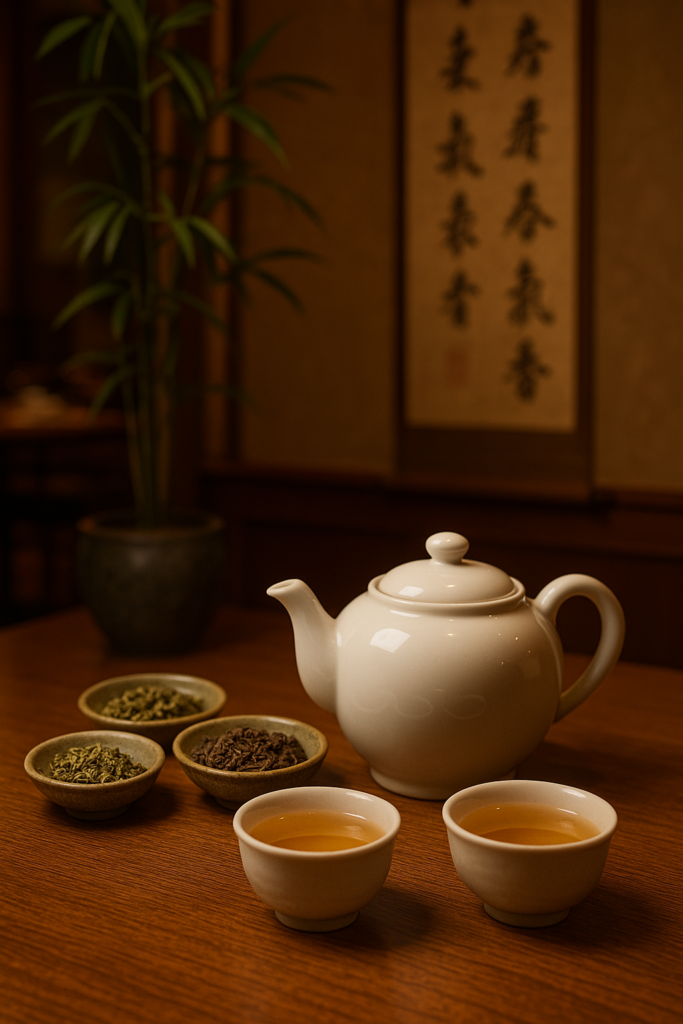When dining at a Chinese restaurant, one of the first things you’re often served—before menus or even water—is a warm pot of tea. This isn’t just a welcoming gesture; it’s a long-standing cultural tradition. But what exactly is the tea you’re drinking? In this full guide, we explore the types of tea commonly served in Chinese restaurants, their flavors, benefits, and the rich heritage behind them.
Why Do Chinese Restaurants Serve Tea?
Offering tea in Chinese restaurants goes beyond simple refreshment—it’s a meaningful practice steeped in cultural tradition. Tea is considered a symbol of hospitality, respect, and good health in Chinese culture. It helps cleanse the palate before meals, aids in digestion, and encourages a relaxed, welcoming dining experience.
The Most Common Teas Used in Chinese Restaurants
Here are the most popular types of tea you’re likely to encounter:
1. Jasmine Tea
-
Type: Green tea scented with jasmine blossoms
-
Flavor: Light, floral, and slightly sweet
-
Why it’s served: Jasmine tea is perhaps the most commonly served tea in Chinese restaurants. It’s aromatic, pairs well with many dishes, and offers a calming effect.
2. Oolong Tea
-
Type: Semi-oxidized tea, positioned between green and black varieties in processing and flavor.
-
Flavor: Smooth, toasty, sometimes fruity or nutty
-
Why it’s served: Oolong tea is renowned for its ability to aid digestion, making it a superb pairing for indulgent, fatty meals. It’s a popular choice in dim sum restaurants.
3. Pu-erh Tea
-
Type: Fermented black tea, aged over time
-
Flavor: Earthy, bold, mellow
-
Why it’s served: Pu-erh is often found in more traditional or high-end Chinese restaurants. It’s prized for its ability to cut through greasy foods and support gut health.
4. Chrysanthemum Tea
-
Type: Herbal tea made from dried chrysanthemum flowers
-
Flavor: Light, floral, and mildly sweet
-
Why it’s served: Often offered in Southern Chinese eateries, this caffeine-free option is great for cooling the body and calming the nerves.
5. Tie Guan Yin (Iron Goddess of Mercy)
-
Type: Premium oolong tea
-
Flavor: Floral, buttery, and rich
-
Why it’s served: Found in more authentic Chinese tea houses or upscale restaurants, it reflects a focus on quality and traditional Chinese tea culture.
Health Benefits of Chinese Restaurant Teas
Each tea brings unique health benefits:
-
Jasmine Tea: High in antioxidants, may reduce stress and improve skin.
-
Oolong Tea: Supports metabolism and weight management.
-
Pu-erh Tea: Known to lower cholesterol and improve digestion.
-
Chrysanthemum Tea: Reduces inflammation and soothes the eyes.
-
Tie Guan Yin: Rich in polyphenols, may support heart health and mental clarity.
How Is Tea Served in Chinese Restaurants?
Typically, tea is served in a small pot with tiny cups. Hot water is sometimes refilled multiple times to re-steep the same leaves. The small cup size encourages slow sipping, allowing the diner to fully appreciate the aroma and flavor.
In some traditional settings (especially in places offering dim sum), the tea ritual may even involve rinsing the cups and teapot before use—a sign of respect and cleanliness.
Can You Ask for a Specific Type of Tea?
Yes! Many restaurants offer several options, even if they automatically serve one type (often jasmine or oolong). Don’t hesitate to ask for something different like green tea, pu-erh, or chrysanthemum if you have a preference.
Final Thoughts
Tea in Chinese restaurants is more than just a drink—it’s an experience deeply tied to culture, tradition, and wellness. Whether it’s the fragrant jasmine or the robust pu-erh, each tea tells a story and enhances your meal.
Next time you’re dining out, take a moment to savor the tea—it’s a subtle but essential part of Chinese culinary hospitality.
Want more cultural food insights and culinary guides?
Visit us at magazineblogs.co.uk for more in-depth articles on food, lifestyle, and global traditions!

